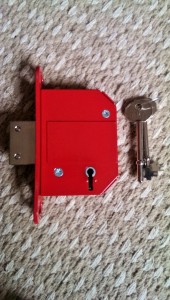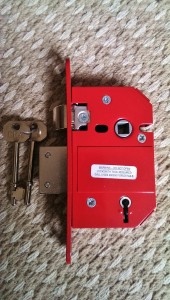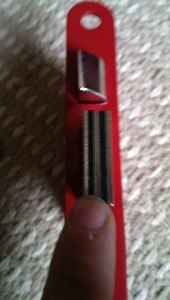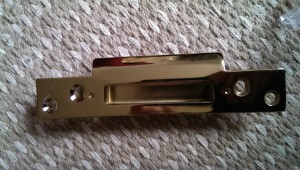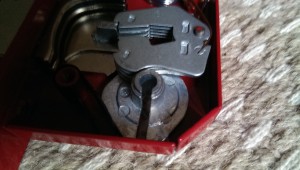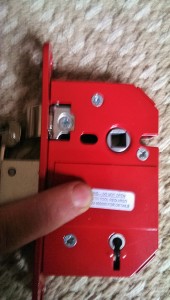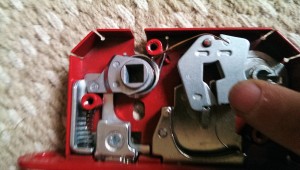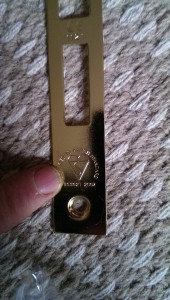Which lock have I got?
Can you see your lock? Do you know what type of lock you have? Is it secure? Is it insurance standard? – All are important questions to look at your home security.
This weekend, I found myself walking through the high street of a Norfolk coastal village. One that is much quieter in winter because most of the homes are holiday lets. My wife, who is usually bored by my lock information, has obviously been taking in a lot more than she cares to admit, because she pointed to a door and told me it was not insurance rated. She was correct. This prompted me to look at all the other doors we passed and I soon discovered the majority of houses in that street would not receive insurance pay outs if they were burgled. On top of that, many would have been extremely easy for the burglar to gain access to.
So here is another visual guide to what makes you a burglar’s target, and what makes him look elsewhere.
If you have a door with one of these Horizontal sashlocks; then beware! Most of these in Norfolk at least are three lever locks. If this is the only lock on your door, the burglar might just have a go because they have short bolts, no anti-drill reinforcement and are usually quite old. The five lever versions are very strong, but equally very expensive and require more holes in the door. Having a five lever deadlock fitted as primary security is the cheapest option that will satisfy the insurance people.
then beware! Most of these in Norfolk at least are three lever locks. If this is the only lock on your door, the burglar might just have a go because they have short bolts, no anti-drill reinforcement and are usually quite old. The five lever versions are very strong, but equally very expensive and require more holes in the door. Having a five lever deadlock fitted as primary security is the cheapest option that will satisfy the insurance people.
If I see a door with handles like the one in this image below,

then I have no clue as to the strength of the lock fitted into the door as the mechanism is essentially hidden when shut. While your insurance is still going to demand a five lever version of this sashlock, the burglar is less likely to waste time on this unless he knows what is in your house and is specifically going after it.
 Now, if you have a lock like this as your only security, then get it looked at right now. This is the nightlatch (often called a “Yale” lock) and will probably take seconds to bypass. Seriously, I could walk up to one of these and be in so fast, a passerby wouldn’t even notice I didn’t use a key. There are some that have handy little additions to slow the burglar down, but mostly it is so easy, the burglar has nothing to lose when attacking this type of lock. The outside of the British Standard version of this type of lock looks like this.
Now, if you have a lock like this as your only security, then get it looked at right now. This is the nightlatch (often called a “Yale” lock) and will probably take seconds to bypass. Seriously, I could walk up to one of these and be in so fast, a passerby wouldn’t even notice I didn’t use a key. There are some that have handy little additions to slow the burglar down, but mostly it is so easy, the burglar has nothing to lose when attacking this type of lock. The outside of the British Standard version of this type of lock looks like this.
When I am faced with this type of nightlatch as a locksmith, I know I’m going to be earning every penny of my fee and there is probably going to be sweating and cursing going on before that door is open. The burglar is simply going somewhere else. Again, these are more expensive than their basic cousins, but they do have many features to make life harder for the intruder.
Or composite doors;
These doors are supposed to be super secure. After all, they have all those extra hooks and bolts and rollers that engage when the handle is lifted. But the door is only as good as the lock, and the standard locks are not very good.
Here is the standard lock,
And here is what happens with cylinder snapping.
So, while these locks are still acceptable by your insurance provider, they will not deter the burglar.

To do that, you need a cylinder like this one;
From a distance, the intruder can see the lock is not standard. If he does get close, he will see the kite mark. These locks are reinforced where the standard ones are weak, and actually designed to break closer to the front, meaning the attacker still cannot get to the bits he wants to.
Finally, if you have any version of a rim lock which will be in a similar style to this,

as your only door security, then you need something else as well. I find these on many farm houses and older buildings. They are very poor for stopping the burglars and easy to spot from the outside because they look like the horizontal locks but the key hole is usually lower or higher than the knob handle, so the intruder can identify them with ease.
There are many variations to all the types of lock mentioned above and this information is for guidance only. If you feel your security is not adequate, then ask your local locksmith for a security check. If he/she is any good, they will provide this service for free. Please also check elderly friends and relatives. I often visit older people who have lived with the same locks since before British Standard kite marks were even thought of. By talking to them about their security, you just might be saving them from an intruder.
Should you have any questions about the information above, please feel free to get in touch via any of the ways on my contacts page.
Thanks for reading.
admin March 1, 2017
What lock have I got? / What's wrong with my lock? / Which lock? /






